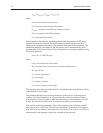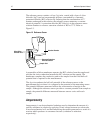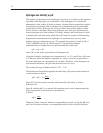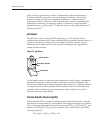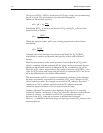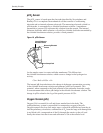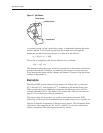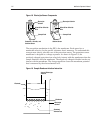
IĆ12 800 Series Operator's Manual
Since it is not possible to measure intra-cellular oxygen tension (pO
2
), arterial pO
2
has become a standard for clinical evaluation of arterial oxygenation status.
Measurement of pO
2
(A), which indicates the oxygen tension in arterial blood,
reflects the pressure or driving force for moving oxygen from one location to the
next due to pressure differential; it is not a measurement of the O
2
content, but it
provides a measurement tool to evaluate the pulmonary gas exchange efficiency
from an arterial blood sample.
Complete laboratory evaluation of oxygenation often requires much more than
simple blood gas measurements. Assessment of ventilatory system and acid-base
status is essential to properly interpret clinical significance of arterial oxygenation
status. However, many patients can be evaluated and treated successfully using
blood gases alone if clinical observations and patient history are taken into
account.
16
The measurement of pO
2
is significant in evaluating the degree of hypoxemia (a
deficiency of O
2
in arterial blood) present in a patient. The laboratory reference
value for pO
2
is usually 95 mmHg (12.7 kPa) for a healthy young adult living near
sea level. However, as with pCO
2
and pH, a wider range of values may occur
before any therapeutic action is indicated. Generally a pO
2
of 80 mmHg (10.7 kPa)
signals therapeutically significant hypoxemia. Above this value there is very little
change in oxygen saturation or oxygen content with changes in oxygen tension, but
below it changes in saturation can occur rapidly. Exceptions to this limit are
newborns, who have an acceptable range of 40 – 70 mmHg (95.3 – 9.3 kPa) and
adults over 50 years old, who have a normal deterioration of lung function that
causes a decrease in expected pO
2
values of about 1 mmHg (0.13 kPa) per year.
14
pO
2
Sensor
The pO
2
sensor is based upon the electrode described by Clark.
17
It is a complete
electrochemical cell that incorporates amperometric technology. The sensor
consists of a platinum (Pt) cathode, and silver (Ag) anode, an electrolyte solution,
and a gas permeable membrane.



